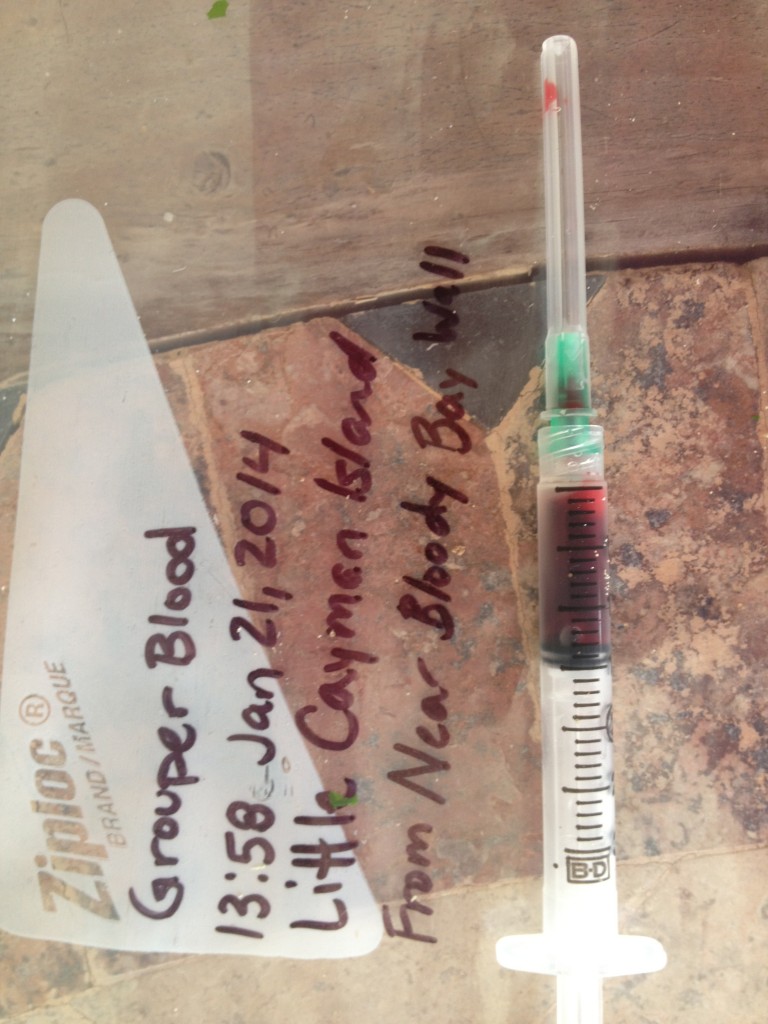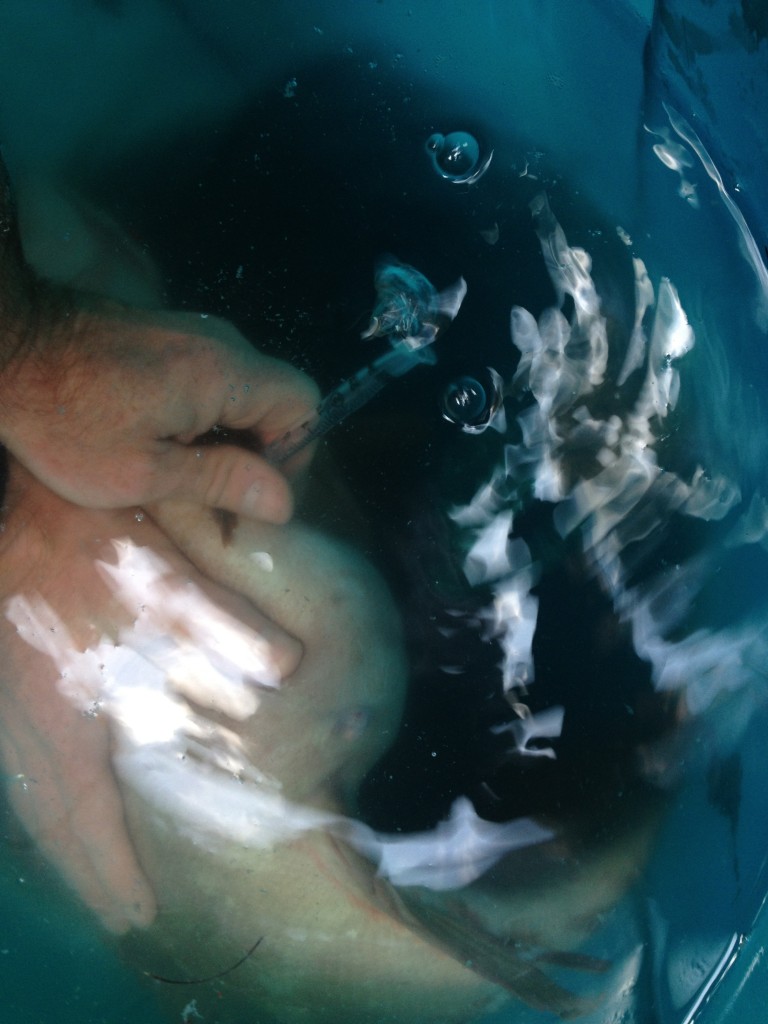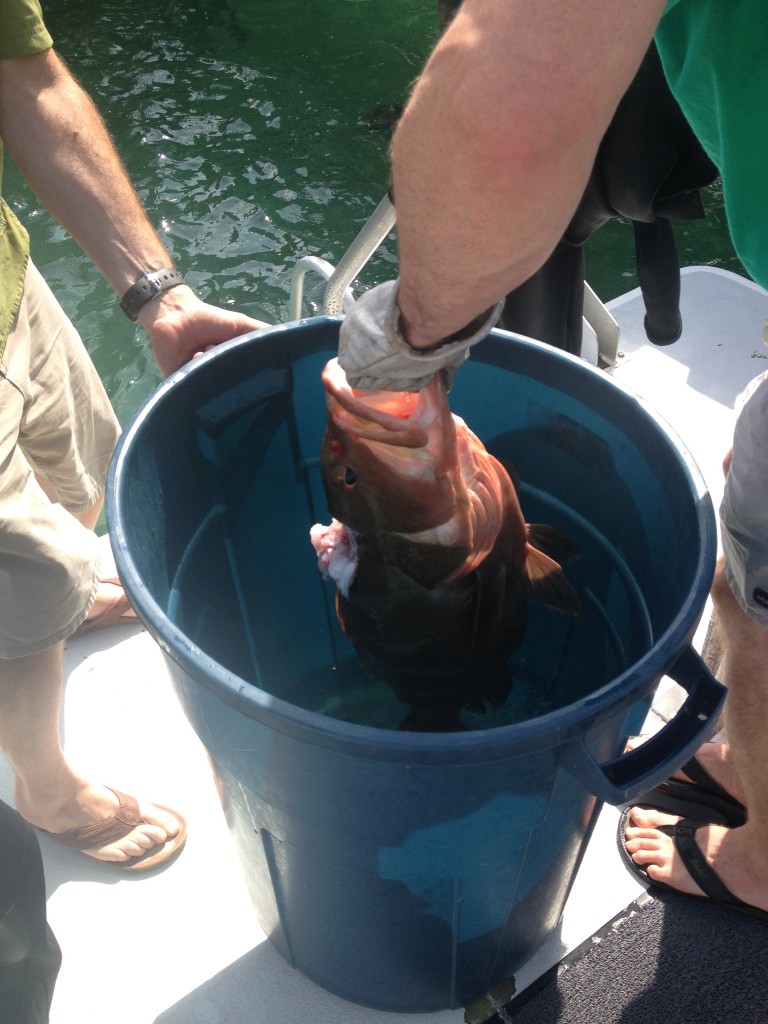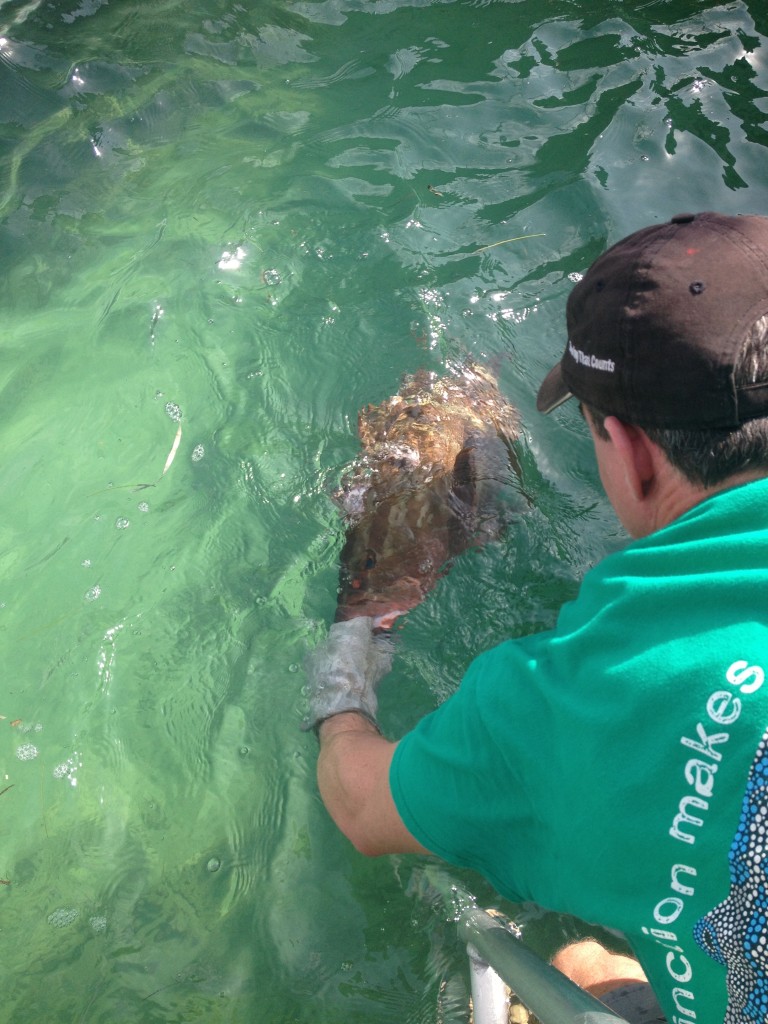Hello Everyone!
It was so great to talk with you today on the live video feed and share some of the work happening here on Little Cayman. During our discussion today, the question was asked, “Who are the Nassau Grouper’s predators?” Sharks are certainly one of their main predators on the aggregation. Below is a story from a few years ago about a fish we found that had been attacked by a shark. Take a look!
Here you go:
While eating lunch yesterday, we got a phone call from one of the local dive shops here on Little Cayman (there are 4). Apparently, they had gone out on a morning dive near the grouper’s aggregation site and found a badly injured, adult Nassau floating at the surface of the water and a Caribbean Reef Shark circling the fish. The dive boat scared the shark away, so one of the dive masters collected the grouper and brought it back to shore. The divers wanted to know if we could possibly help. So, we rushed over and found the fish in a large container filled with sea water. It had two big gashes, one on it’s head and another near its tail. Also, it’s swim bladder was distended and filled with air, which happens if a fish ascends to the surface quickly. Dr. Brice Semmens, a lead scientist on the project, quickly assessed the situation. He decided to first use a syringe to release the air from it’s bladder.

You can see that the grouper’s belly is distended. It is actually the fish’s swim bladder filled with air.
Next, it was decided that we would take a blood sample from the fish, to be used in the Grouper Moon Project’s genetics study of the local Nassau.

This blood sample will be used to help in the Grouper Moon Project’s genetic study of the local grouper.

The grouper was still quite alive though badly injured. We decided that if we could get it back into the water, and it was able to still swim, it could possibly hunker down in a safe place in the shallow waters near shore and recover. So, we released him back into the water close to the dock.
The large, beautiful grouper quickly swam to the bottom and then off it went under the dock. It looked a bit wobbly and we have no idea if the grouper will be able to survive or not but we sure hope so!! What do you think?






that’s sad.i’m glad you helped. 🙂
I agree with Zoe it is sad but I’m glad you helped !!
its good people care enough about the groupers to rescue it
I agree with everyone. I’m glad you helped.
Do you think that the shark attacked it? Is it possible that the Grouper got caught on something? Maybe it got into a tight situation and got hurt trying to get out.
See you at the video chat Todd!!!!
Rosie
Yes, we definitely think the shark attacked the grouper! I will not be seeing you all on the chat today because I will be teaching at a school here on Little Cayman. However, I have sent you all a web chat we did yesterday with a few schools that I know you will enjoy! Can’t wait to see you all on Monday!!
I feel bad for the grouper. it must hurt to have those cuts!!!!!!! in glad that you rescued the baby Nassau grouper from the shark!!!!!!(: (: (:
but……it wasn’t a baby……was it???
How long can a fish go with its swim bladder full of air?
That is so cool you got the chance to save a life….
Dr. Bohannon
its nice that you saved the grouper from the hungry shark…
I know I already replied, about the grouper but…
OWWWWWW!!!!!!!!!!!!!!!!!!!!!!
That must have hurt a lot!!!!!!!!!!!!!!
I REALLY hope the grouper survives!!!!!!!!!!!!!!!!!!!!!!
awww thats sad I L0VE GROUPERS!!!
How often does something like this happen? Are grouper commonly attacked by sharks, or is this just a rare occurrence?
Great question. I think it is fairly common. But, that would be a great question to ask during one of out live feeds!
I noticed the gash in the grouper’s head was all white. I’ve seen white fish meat, but wouldn’t a fish bleed from an injury that big?
Hi Julia,
Great question. I actually had to ask the researchers this one. It turns out, fish do definitely have blood, however, we think the fish had been bitten a while before it was found and that it had at that point stopped bleeding, just like you stop bleeding a while after you are injured.
Good one!
thanks!
wow that’s amazing how the scientist’s were able to help the fish.
Good question Diego,
The fish’s swim bladder was distended and full of air, which can happen when it ascends to the surface too quickly. Because of this, the fish was not able to descend and therefore was just floating at the surface. The scientists released the air from it’s swim bladder, allowing it to descend and we placed it in a shallow, sheltered part of a lagoon.